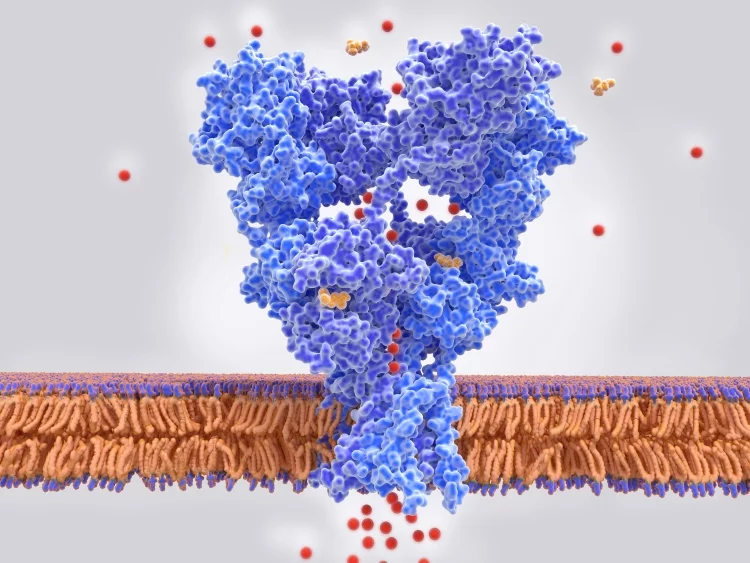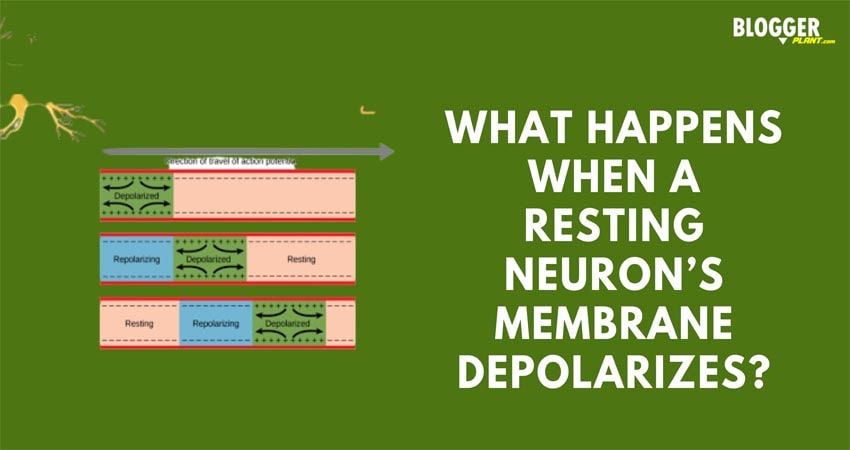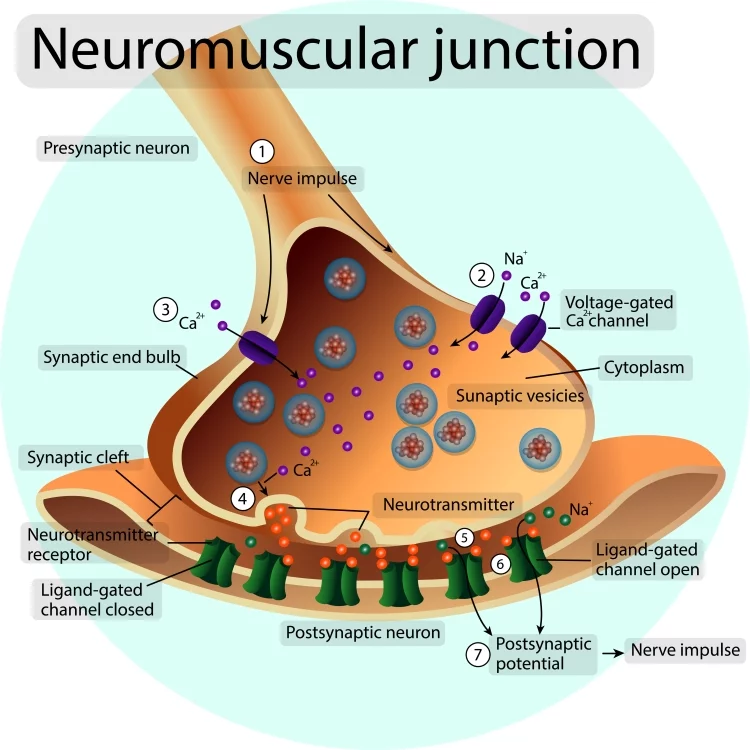Neurons are cells that help transmit information throughout the body. They can be found in the brain, spinal cord and peripheral nerves. When a neuron’s membrane depolarizes, it is sending an electrical signal to the next cell down its line of communication. This process happens when there is too much sodium outside of the cell, which causes ions to flow into the cell and create a charge imbalance across its membrane.
When a resting neuron’s membrane depolarizes, an action potential occurs and the cell is capable of producing output.
Contents

The potential difference between the inside and outside of a cell is known as the resting membrane potential. This voltage potential is maintained by sodium and potassium ion channels in cells. When an action potential occurs, these ions move through their respective channels into or out of the cell to cause depolarization. The flow of ions creates a change in charge that alters the membrane’s shape which leads to opening more sodium ion channels on one side of the membrane than on other side. This causes an excess number of positive charges (Na+) on one side compared with negative charges (Cl-) on another side, which results in polarization across both sides and restores the resting membrane potential after depolarization has occurred.
RESTORING of the PRE-POLARIZATION APPARENT POTENTIAL is caused by potassium ions leaving while sodium ions entering the cell.

A neuron’s resting membrane potential is the difference in voltage between the inside and outside of a cell. A neuron’s resting membrane potential can be measured by how much charge has been pumped into or out of the cell, which will result in a change of voltage. The amount of charge that needs to be added or removed is dependent on how many ions are present within the cells; if there are more charged ions than there are uncharged ones then it will take less energy to pump them across the membrane for an equal change in voltage.
The resting membrane potential is a measurement of the difference between the inside and outside of a neuron cell.

Neurons communicate with each other through electrochemical signals that are sent through the axon. When a neuron is stimulated, it releases neurotransmitters into the space between itself and another neuron. The neurotransmitter molecules bind to receptors on the post-synaptic neurons, causing depolarization. This causes an influx of positively charged ions into the cell which creates a change in voltage across its membrane and triggers an electrical signal called an action potential.
Depolarization of an axon is the repolarization of its plasma membrane from a polarized to depolarized state. It occurs when a neuron receives input that causes it to fire an action potential.
Everyone knows what it means to polarize something. When you align positive and negative charges, they form a strong bond that is hard to break. But what does depolarization mean? It’s when the opposite happens: the molecules in an object become evenly distributed so there are no net charges on either end.
If an action potential travels down the axon of a neuron and reaches the end, it can either stop there or depolarize past its normal membrane potential. This is referred to as hyperpolarization (which means opposed to polarization)

The membrane potential is a measure of the difference in electrical charge across the cell membrane. It is created by ion channels, which are proteins that reside in the lipid bilayers and allow ions to flow through them. These channels open and close depending on what’s happening outside of the cell, such as changes in temperature or pressure, or inside of it, such as an influx of calcium ions. The resting potential refers to when there are equal amounts of potassium and sodium ions on both sides of the membrane; this state allows for an even distribution of charge between cells so they can stay stable and function properly without being over-charged or under-charged.
The resting potential is caused by the sodium-potassium pump, which pumps three sodium ions out of the cell for every two potassium ions that enter.
Neurons are the cells in the brain that control thought and body movement. In order to function well, neurons need to be able to rest. However, when a neuron is hyperactive and firing off at an increased rate it may not have enough time to go back into resting mode. This can lead to further issues such as depression or anxiety disorders. Neuron Calm offers a natural, safe way of returning your neuron’s activity back down so they can return back to resting mode without any adverse side effects like feeling drowsy or fatigued after using it.
The neurotransmitters that transmit signals across the synapse to trigger an action potential in a neighboring neuron.
The Na+-K+ pump is a vital cell membrane protein that generates the membrane potential. It does this by pumping 3Na ions out of the cell for every 2K ions pumped back into the cell. This process creates an uneven distribution of charges across the lipid bilayer, with more negative charge outside and more positive charge inside.
1. The Na+-K+ pump generates a membrane potential by transporting three sodium ions out of the cell and two potassium ions into the cell
2. This creates an imbalance in charge between the inside and outside of the cell, which leads to a voltage difference across the membrane
3. As this voltage difference increases, it becomes more difficult for any additional ions to enter or leave through passive transport
4. Active transport is required to maintain ion balance in cells with high concentrations of sodium or potassium ions
5. Sodium channels are opened when there is a higher concentration of sodium on one side of the membrane than on the other side; this allows for active transport from one side to another until equilibrium is reached again
6. Potassium channels are also opened when there is too much potassium on one side, but they work in reverse – allowing for active transport from that area back towards equilibrium
The Na +- K+ pump generates a membrane potential by moving three sodium ions out of the cell and two potassium ions into the cell.
When neurons are at rest, their membranes maintain a polarized state. If the membrane depolarizes, it means that an influx of positively charged sodium ions and potassium ions have entered the cell. This change in voltage triggers other changes to happen inside the neuron such as increased release of neurotransmitters or opening up ion channels for electric currents to flow through. The result is called action potentials which carry nerve impulses from one place to another throughout your body on long axons – all while maintaining balance with resting neurons so you can be conscious! Some factors that may cause this process include hormones like adrenaline and stress levels which increase during major life events like finals week or when preparing for job interviews.

About Benard David
I am Benard David. I am the co-founder of this blog, and the article writer. I have been writing for years, and my favorite things to write about are sports, tech, health and fitness, how-to's, reviews and articles on personal development.
 |
 |
 |
 |
Recent Post
Let's try FREE Giveaways. Or go to Free Gifts page
Update AdBlock to see the secrets. Hit a button below for update
 |
 |
 |
 |